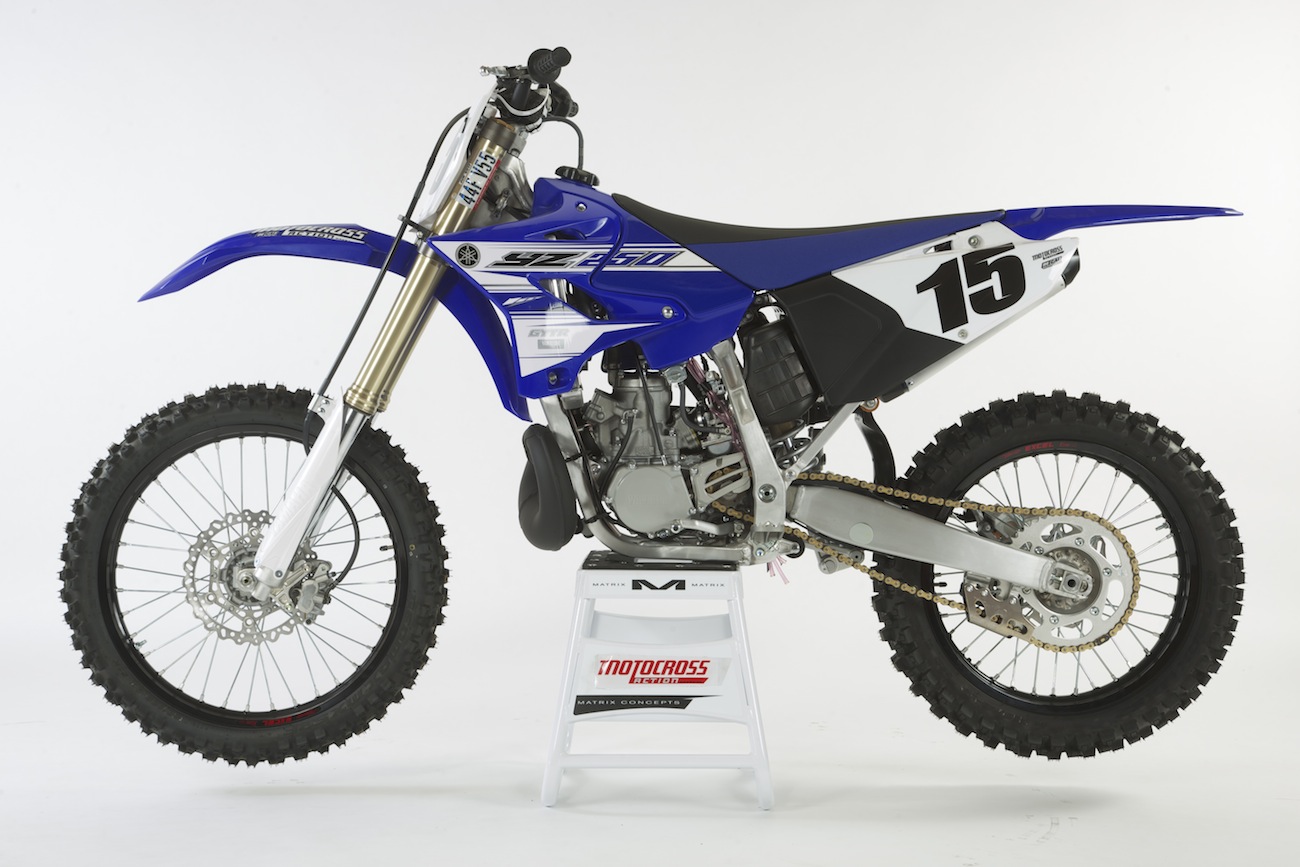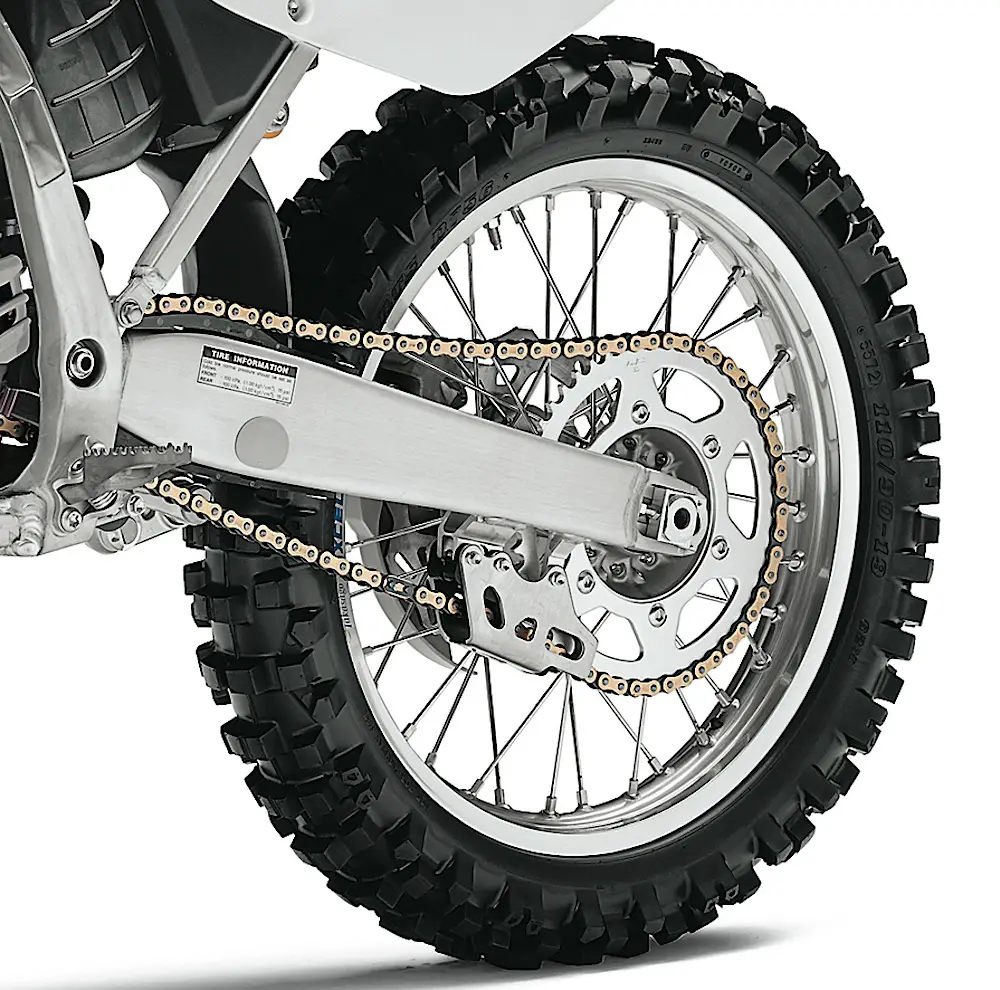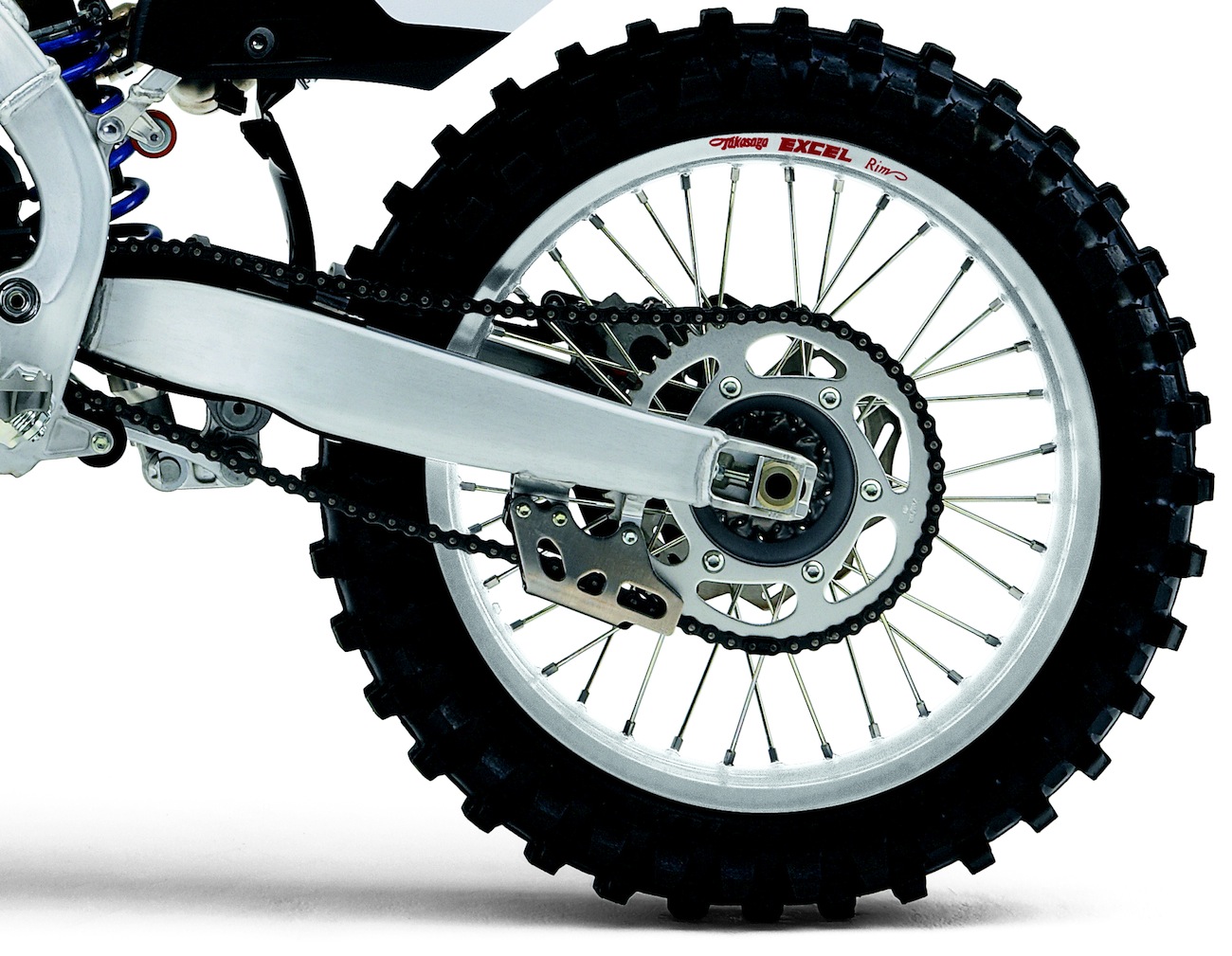ASK THE MXPERTS: CAN I PUT A YZ450F SWINGARM ON MY YZ250 TWO-STROKE?
 The swingarm, rear axle, shock linkage, brake carrier and rear hub on the YZ250 two-stroke have been stuck in a time warp. The YZ450F swingarm was updated in 2009.
The swingarm, rear axle, shock linkage, brake carrier and rear hub on the YZ250 two-stroke have been stuck in a time warp. The YZ450F swingarm was updated in 2009.
Dear MXA,
I have read in the past that MXA’s wishes Yamaha would upgrade the rear suspension of the YZ250 two-stroke with the rear end parts from the YZ450F. I am seeking MXA’s expertise to determine what parts from what year and size YZ-F I would need for the transformation. I have access to a brand-new 2014 YZ450F chassis (sans engine) that could be the donor. Will it just bolt onto my 2012 Yamaha YZ250?
 This is the Yamaha YZ250 two-stroke swingarm. The circular plastic plug on the side of the swingarm allows access to the shock linkage bolt.
This is the Yamaha YZ250 two-stroke swingarm. The circular plastic plug on the side of the swingarm allows access to the shock linkage bolt.
Since you have a donor YZ450F, it would be a simple swap, except that the 2014 shock has been moved over to make room for the YZ450 backwards engine. The best way to do it, and we speak from experience, is to use the parts from a 2009 Yamaha YZ450F‚ since it lines up perfectly with the YZ250 shock mount. However, you should use the YZ450F hub, 25mm rear axle (in place of the YZ250’s 22mm axle) and the wheel spacers and brake caliper carrier. The stock YZ250 shock will bolt on (and even though the shock linkage has totally different mounting, dimensions and parts the rising rate is identical to the YZ250 two-stroke’s rising rate).
 The YZ450F swingarm has low-slung shock linkage and doesn’t need the plastic plug. It is lighter and has a different rigidity balance.
The YZ450F swingarm has low-slung shock linkage and doesn’t need the plastic plug. It is lighter and has a different rigidity balance.
Now, we surmise that you would like to know, if it is worth all of the trouble in terms of weight, handling or performance. Here are the changes:
(1) Axle. The rear axle will be upsized from 22mm to 25mm. This improves feedback from the rear of the bike by making the swingarm and rear wheel more unified.
(2) Flex. The YZ450F swingarm has a different “rigidity balance” —which is a fancy term for swingarm flex. The YZ450F swingarm has more vertical and twist flex than the YZ250 swingarm. How much more flex? It is four percent less rigid vertically and five percent less rigid in twist. Conversely, it is eight percent more rigid horizontally.
(3) Weight. The YZ450F swingarm is 350 grams lighter than the YZ250 two-stroke swingarm. That is 12.3 ounces (about three-quarters of a pound lighter). But, there is more weight savings to be gained (or is that lost?). The YZ450F rear hub is 265 grams lighter than the YZ250 hub. When you add that 265 gram savings to the swingarm’s 350 gram diet, the result is a one pound, five ounce reduction in unsprung weight.
(4) Performance. You should be able to feel the combination of the stiffer rear axle, decreased unsprung weight and flexier swingarm on the track. How so? The lower the unsprung weight, the quicker the suspension reacts to bumps. The improvement is most significant over repetitious, high-frequency bumps (like braking and acceleration bumps). Why? The more weight you load on the wheels, the more the shock absorber has to struggle to bring the mass to a stop. As the damper struggles with the weight, the suspension packs, the wheels kick and the bike becomes unstable. Shaving unsprung weight lessens the suspension’s work load. It’s said that a one-pound reduction in unsprung weight is equal to a six-pound reduction in sprung weight. Thus, Yamaha’s 1.3 pound weights savings is the equivalent of saving seven pounds on the whole bike. Plus, the increased swingarm flex helps the bike absorb the load while cornering—with more feel as the bike bends slightly more into turns.
(5) ROI. Is it worth it? Probably not. The weight savings is the best part of this mod. However, it is an expensive modifictaion that makes a bigger difference on a heavier and torquier four-stroke than on a lighter and looser two-stroke. However, it makes little sense for Yamaha to have a new generation swingarm in the parts department, but keep using the heavier and older design on the two-strokes.





Comments are closed.